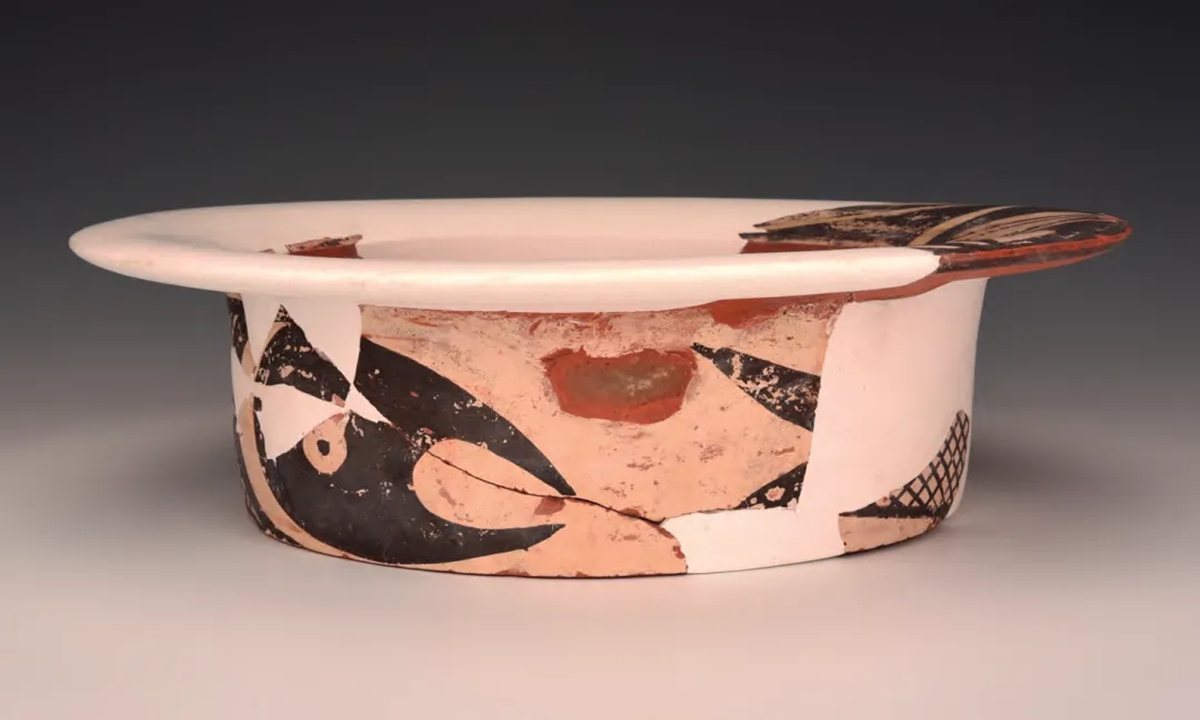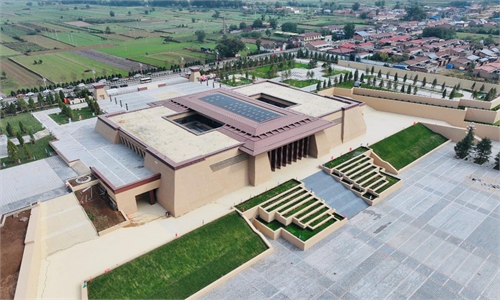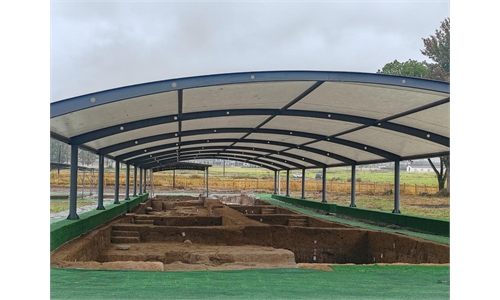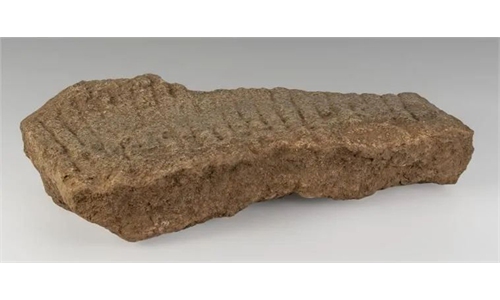ARTS / CULTURE & LEISURE
Rare painted fish-pattern pottery basin unearthed in N. China, highlighting Yangshao culture's artistic excellence

A rare painted pottery fish-pattern basin from the Yangshao Culture period was discovered at a pit in Cuijiahe village, North China's Shanxi Province. Photo: Courtesy of Shanxi Provincial Institute of Archaeology
A rare painted pottery fish-pattern basin from the Yangshao Culture period was discovered at a pit in Cuijiahe village, North China's Shanxi Province, with details released to the public by research team from the Shanxi Provincial Institute of Archaeology on Wednesday.
The H4 pit, located in the core area of the site, was partially damaged by soil extraction, leaving only half intact. Its outline suggests it was originally a round-bottomed vessel. The pit yielded a rich array of artifacts, primarily pottery, belonging to the middle Yangshao culture period of the Miaodigou culture.
Among the recovered pottery, a painted fish-pattern basin is notable for its unique shape and exquisite decoration, featuring two black fish in a dynamic, chasing pose with white background. This piece is a rare example of painted pottery art, highlighting the artistic sophistication of the Miaodigou culture at its peak. This fish-pattern basin is similar in both form and decoration style to items discovered at the Xiaozhao site in Yuanqu county, making it one of only two known examples of vividly depicted fish motifs in Yangshao culture.
Notably, the basin's broad flared rim, nearly vertical belly, and flat base are rare features in Miaodigou culture pottery. However, these characteristics align with artifacts from the same period found in Central China's Hubei and Henan provinces and other regions, indicating cultural interaction and exchange during the mid-Yangshao period.
In addition to this pottery basin, the H4 pit yielded a total of 2,908 pottery shards, six stone tools such as spades, knives, and rings. The majority of the pottery is made from light yellowish clay or red clay, with smaller quantities of sandy brown and grayish pottery.
The pottery is meticulously crafted, with thin walls and uniform shapes. Some are adorned with black paint, while others remain plain with polished, smooth surfaces. The painted pottery typically has a red or light yellow background with black decorations, including circular dots, arcs, and triangular lines.
Meanwhile, due to the partial nature of the H4 pit's preservation and the fragmentary condition of many of the pottery shards, only three pottery items could be fully restored. Based on the characteristics of the pottery rims and fragments, a total of 355 pottery items were identified, including painted pottery basins, rolled-rim basins, and jars predominantly characteristic of the Miaodigou culture's middle phase.
Flotation analyses of 13 liters of soil from the pit uncovered 139 carbonized plant seeds, including an equal proportion of crop and weed seeds. The crops were primarily millet, with a small amount of broomcorn, as well as lesser amounts of grass pea, pigweed, and others. The research team analysis has since dated the H4 pit to around 3500 BC.
The Cuijiahe site was first discovered during archaeological surveys in the late 1950s and was listed as a provincial cultural heritage site in 1965. Previously, a painted pottery basin from the Miaodigou culture was collected at the site, archaeologists said.
In 2021, a systematic survey of the surrounding area of the Dongxiafeng site identified over 80 archaeological sites from the Yangshao culture, confirming that the Cuijiahe site spans at least 500,000 square meters. It is regarded as a key settlement of the Yangshao culture during its middle phase in the eastern part of the Yuncheng Basin, Qinglong River Valley in North China's Shanxi Province.
Yangshao culture, dating back to some 7,000 to 5,000 years ago, was named after Yangshao village of Mianchi county, Henan Province, where it was discovered for the first time in 1921. Yangshao pottery is often painted with geometric or animal patterns, the main feature of Yangshao culture. Therefore, Yangshao culture also enjoys a reputation of "Painted Pottery Culture."
Global Times



